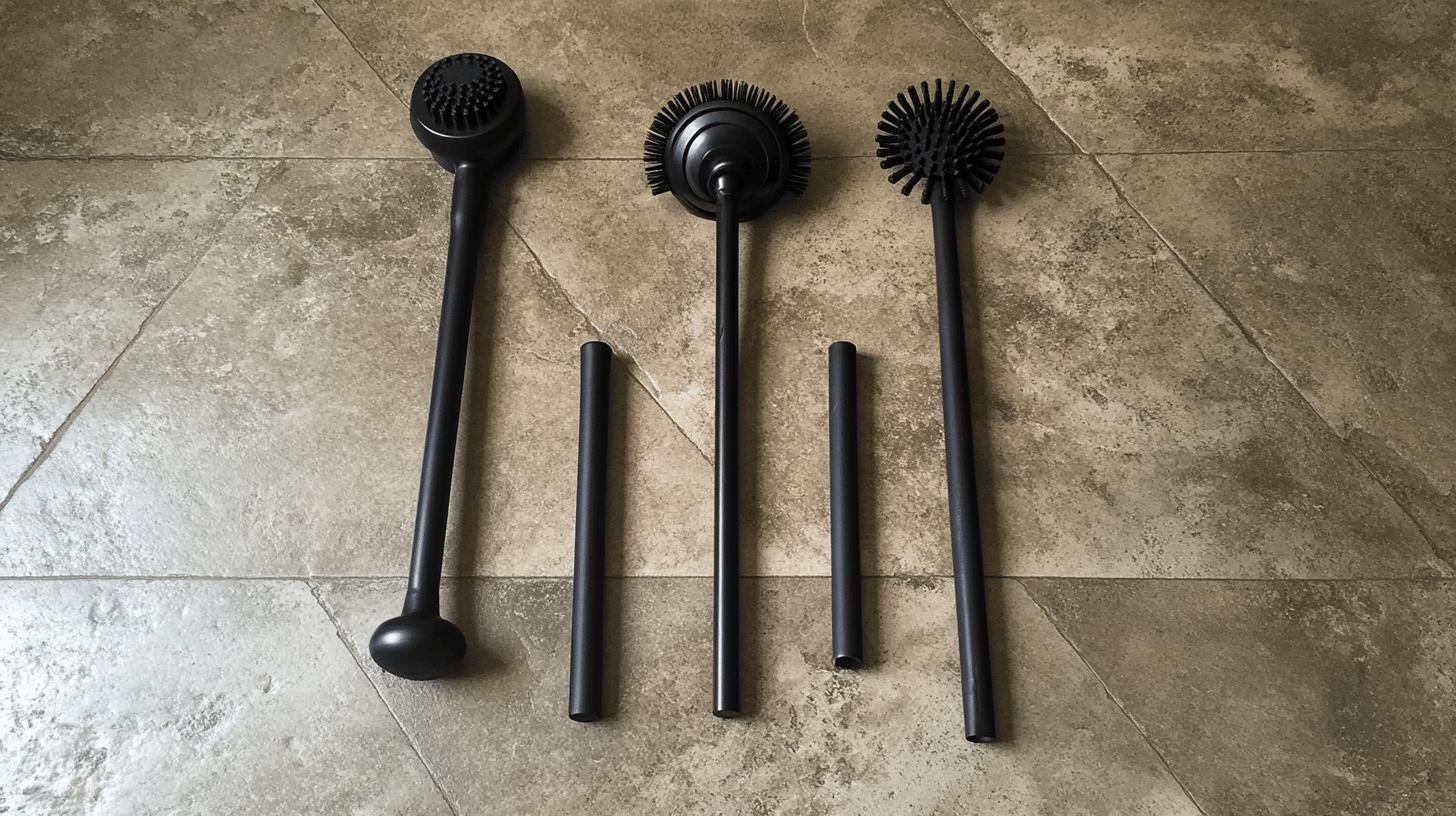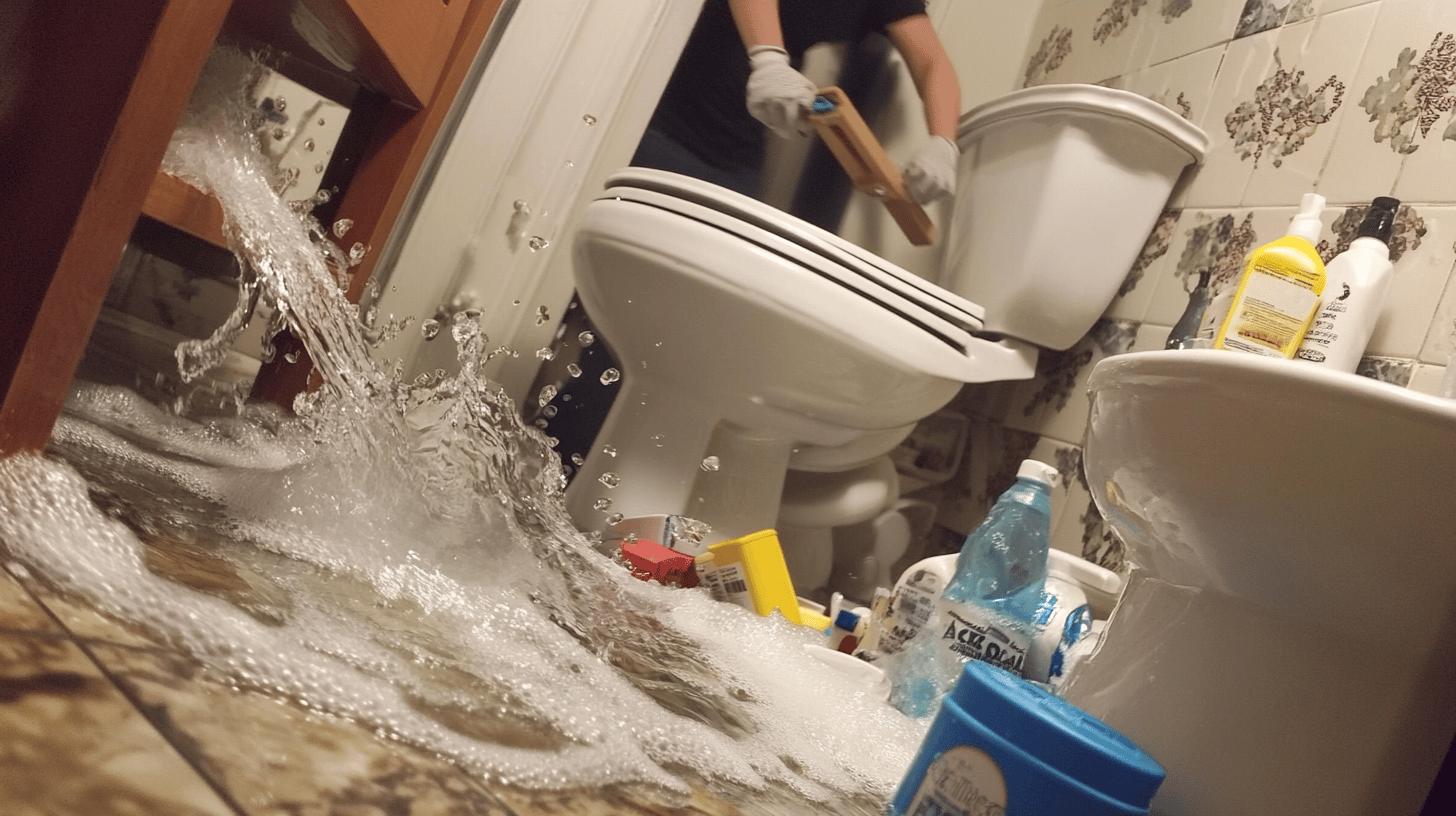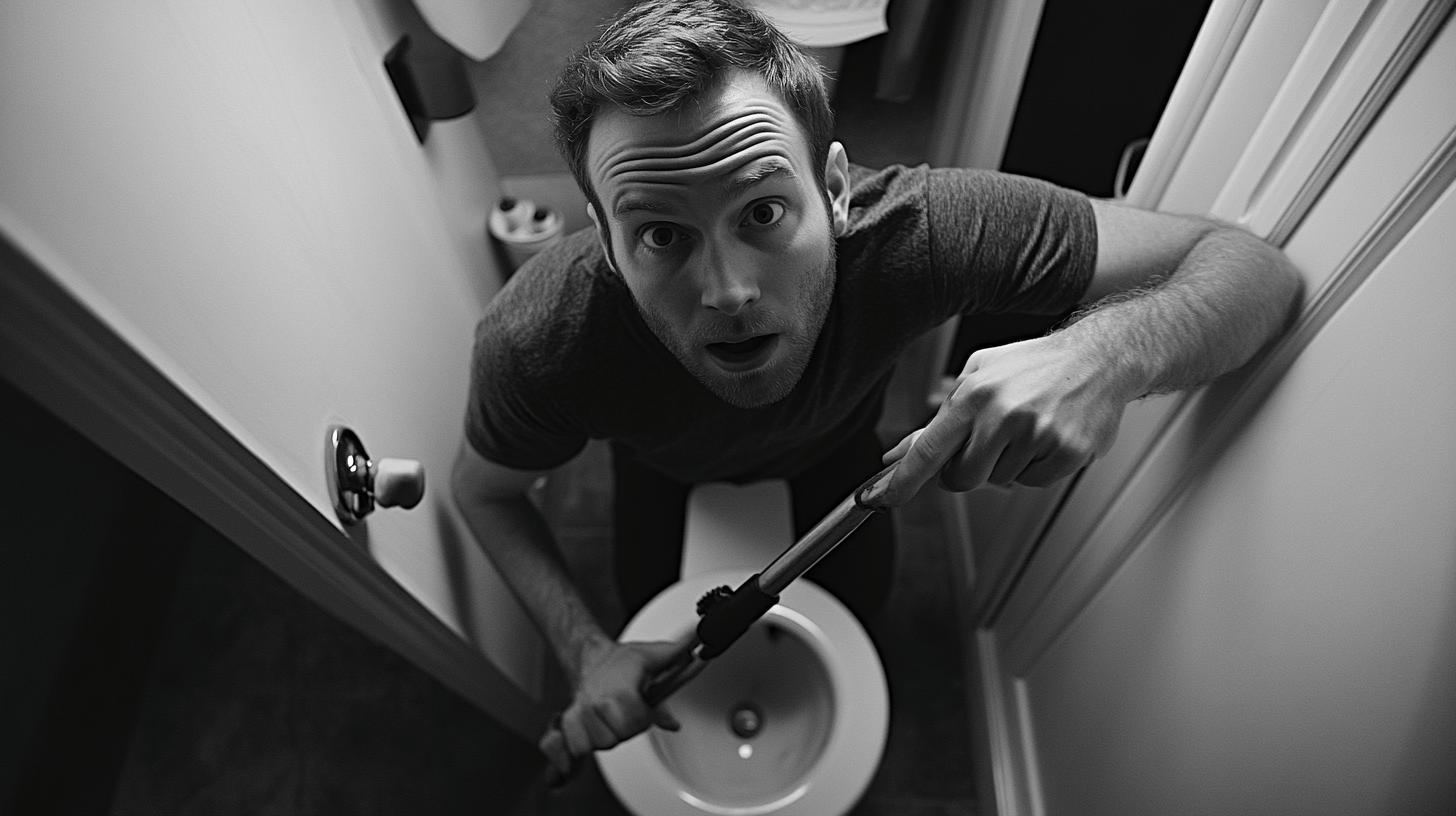TL;DR:
- Mechanism: Plungers use pressure/suction to clear clogs based on Boyle’s law.
- Seal: A watertight seal is essential; rim must fully contact the drain.
- Plunger Types:
- Cup Plunger: For sinks, bathtubs, and showers.
- Flange Plunger: Specifically for toilets.
- Accordion Plunger: For tough toilet clogs.
- Usage Steps:
- Ensure proper water level covers the plunger cup.
- Wear gloves for hygiene.
- Position plunger directly over the drain.
- Maintain vertical handle and use firm thrusts.
- Repeat until clog clears, consult professionals if persistent.
- Advantages: Eco-friendly, effective, avoids chemicals.
- Limitations: Not universally applicable, risk of damage with misuse, complex clogs need professional help.
Struggling with tough clogs? It doesn’t have to be so frustrating. With the right plunger and proper technique, you can clear blockages easily. It’s all about making a tight seal and using the right amount of pressure. This guide will show you how to pick the best plunger and use it like a pro to fix clogs fast. Say goodbye to stubborn drains!
Understanding the Best Plunger Technique
Plungers work by using Boyle’s law, which deals with how pressure and volume are related. When you push the plunger down, it reduces the air inside, increasing pressure. This pressure forces water and air into the clogged pipe, helping break up the blockage. Pulling the plunger back creates suction, which helps dislodge the clog. A good seal is key to making this pressure and suction work. If there’s no seal, air escapes, and the plunge won’t be as effective. Make sure the plunger rim seals tightly to get the best results. Also, wearing gloves helps keep things clean and avoid contact with wastewater.
- Select the Right Plunger: Ensure the plunger size matches the drain opening.
- Position the Plunger Correctly: Align over the drain, ensuring complete contact.
- Apply Petroleum Jelly: Use a little jelly on the rim for better sealing.
- Maintain Upright Position: Keep the handle vertical to enhance the seal.
- Use Steady, Forceful Thrusts: Apply quick, firm plunges, repeating as needed.
Choosing the Right Plunger for Your Needs

Choosing the right plunger is crucial for clearing clogs. The cup plunger, also known as a sink plunger, has a simple rubber cup and straight handle, making it ideal for flat surfaces like sinks, bathtubs, and shower drains. It creates a solid seal around drains, making it great for most blockages. For toilets, the flange plunger is your go-to tool. It has an extra rubber flap that fits into the curved drain, forming a tight seal to build pressure and clear clogs. For tougher toilet blockages, the accordion plunger is best. Made of hard plastic with a bellows-like design, it generates high pressure, making it effective for stubborn clogs, though it requires more effort to use.
| Plunger Type | Best Use |
|——————|————————-|
| Cup Plunger | Sinks, bathtubs, showers|
| Flange Plunger | Toilets |
| Accordion Plunger| Tough toilet clogs |
Step-by-Step Guide to Using a Plunger Correctly
Preparing for plunging is important. Ensure there’s enough water in the sink or toilet to submerge the plunger cup completely. Too much water can overflow, and too little won’t create the right seal. Always wear gloves to protect against wastewater and keep things hygienic.
Creating a good seal is crucial. The plunger rim needs to make full contact with the drain surface to prevent air or water from escaping, allowing the right pressure. For sinks, position the plunger directly over the drain. For toilets, extend the flange to fit snugly in the bowl outlet to ensure the pressure goes where it’s needed.
To plunge, apply firm pressure with quick, forceful thrusts. Keep the handle vertical, push down steadily, and then pull back to create suction. Repeat the motion, maintaining the seal, until the water drains properly. If the clog doesn’t budge, it may be a bigger issue, and it’s time to call a professional. Avoid excessive force to prevent damaging pipes. When in doubt, professionals can safely handle more complex problems.
- Check Water Level: Ensure water submerges the plunger cup.
- Wear Gloves: Protect hands from wastewater.
- Position the Plunger: Align over the drain with a complete seal.
- Maintain Vertical Handle: Keep the handle straight for force.
- Apply Firm Pressure: Use quick, forceful thrusts repeatedly.
- Repeat as Needed: Continue until the clog clears.
- Seek Professional Help: Consult a plumber if the clog persists.
Troubleshooting Common Plunging Mistakes

Common mistakes can make clearing clogs harder. If there’s not enough water, you won’t get a solid seal, which reduces the pressure needed. If the plunger rim doesn’t fully cover the drain, air and water can escape, making it less effective. Using the wrong plunger, like a cup plunger for a toilet, won’t work well either. If the clog doesn’t clear, it might be a bigger plumbing issue that needs a professional.
To improve your chances of success, make sure there’s enough water to cover the plunger for proper pressure and suction. Double-check that the plunger is firmly sealed over the drain, with no leaks. Choosing the right plunger matters—flange plungers are best for toilets, while cup plungers work for sinks. Fixing these common issues will help you clear clogs without complications.
- Check Water Levels: Maintain enough water to cover the plunger cup.
- Ensure Proper Seal: Ensure the plunger’s rim contacts the drain fully.
- Choose the Correct Plunger: Use flange for toilets, cup for sinks.
- Avoid Excessive Force: Apply firm but controlled thrusts to prevent damage.
- Consult Professionals: Persistent clogs may need expert services.
The Advantages and Limitations of Plungers
Plungers are an eco-friendly option for clearing clogs, offering a simple, chemical-free solution that avoids harming both your plumbing and the environment. They’re perfect for those looking to stay green while tackling sink and toilet blockages. The beehive plunger, in particular, boosts efficiency by providing a better seal.
However, plungers aren’t a one-size-fits-all tool. Some may not fit certain toilets, limiting their use. Also, using too much force or incorrect techniques can damage your plumbing or give poor results. While plungers handle most common clogs, complex or persistent blockages may need a professional plumber for proper diagnosis and repair. Experts can tackle tough issues safely and effectively.
| Benefit | Limitation |
|————————————–|———————————–|
| Eco-friendly | Not all fit all toilet types |
| Effective for various clogs | Risk of damage with improper use |
| Avoids harmful chemicals | Complex clogs need professional help |
Final Words
Mastering the right plunger technique can make handling stubborn clogs a breeze, letting you manage minor plumbing issues efficiently at home. You now understand how toilet plungers work with Boyle’s law, how to pick the right plunger for each job, and why creating a proper seal is key to getting the best results.
These tips highlight the benefits of using plungers over harsh chemicals for clearing clogs. By following these methods, you can avoid common mistakes and keep your plumbing running smoothly. And if you’re ever unsure, calling a professional will ensure your plumbing stays healthy for the long haul.
FAQ
What is the most effective way to use a plunger?
To use a plunger effectively, create a watertight seal over the drain and use firm, quick thrusts. Ensure the plunger cup is fully submerged in water and wear gloves for hygiene.
What is the trick to plunging a toilet efficiently?
The key to efficient plunging is forming a tight seal around the drain. Push and pull the plunger vertically with quick motions to maximize pressure and suction.
How do you plunge more effectively?
For more effective plunging, ensure enough water covers the plunger cup. Use consistent, forceful thrusts and maintain a good seal to dislodge stubborn clogs.
What is the best type of plunger for a toilet?
A flange plunger is the best for toilets because its rubber flap creates a better seal, improving plunging effectiveness on curved toilet drains.
How do you use a plunger in a sink?
For sinks, use a cup plunger. Ensure the sink’s overflow hole is covered, create a seal, and use rapid thrusts to clear the clog.
What are the differences between cup, flange, and accordion plungers?
Cup plungers work on flat surfaces like sinks, flange plungers are ideal for toilets due to their enhanced seal, and accordion plungers handle tough toilet clogs.

